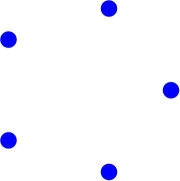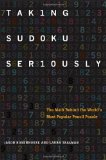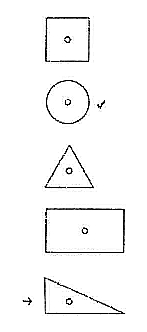Why I Eat
I would like to report on my weight loss progress. Last time I added two new habits, walking my toy dog every day, and drinking more water from the enticing cute bottles I bought.
I named my stuffed dog Liza and I walk with her every day. I didn’t expect immediate weight loss due to this new regime, because my first goal was to get out of the house every day, even if only for two seconds. The next step will be to increase walking time to ten minutes.
Drinking a lot of water doesn’t work well. I spend too much time looking for bathrooms and panicking that I will not make it. I like the idea of drinking a lot of water, but I am not sure I can hold to it, if you understand what I mean.
Since taking on this challenge, I’ve gained two habits, but I haven’t lost a pound.
Now I’m upping my game. Below is my analysis of why I eat. When I eat, I believe that I am hungry. But looking at this more objectively I think this is not always the case: sometimes there are other reasons. I am listing these other reasons so I can fight them face-to-face. Here we go:
- I eat to finish what is on my plate. My mom lived through World War II in Moscow, and instilled in me a terrible guilt when I throw away food.
- I eat extra when I do not know when my next meal is. I experienced extreme hunger in my childhood, so I try to prevent ever having that terrible feeling again.
- I can’t resist free food. I do not feel comfortable with my financial situation, so saving money gives me an extra push to eat even when I’m not hungry.
- I procrastinate by eating. When I am facing a chore I don’t really want to do, I delay it by eating.
- I crave sugar. It used to be worse.
- I have a problem with delicious food. I think that deep inside I feel that life was unfair to me and this piece of tiramisu will be a small bright spot in my usually rainy life. Therefore I need to grab it and gobble it down before it disappears.
Hmm. That was painful to write. My psychoanalyst taught me that pain means I am on the right track.
Share:Three out of Three
Davidson Institute for Talent Development announced their 2012 Winners. Out of 22 students, three were recognized for their math research. All three of them are ours: that is, they participated in our PRIMES and RSI programs:
- David Ding’s project, “Infinitesimal Cherednik Algebras of gln,” came out of his participation in the PRIMES program.
- Sitan Chen’s project, “On the Rank Number of Grid Graphs,” came out of his participation in the RSI program.
- Xiaoyu He’ project, “On the Classification of Universal Rotor-Routers,” came out of his participation in the PRIMES program.
I already wrote about Xiaoyu’s project. Today I want to write about Sitan’s project and what I do as the math coordinator for RSI.
RSI students meet with their mentors every day and I meet with students once a week. On the surface I just listen as they describe their projects. In reality, I do many different things. I cheer the students up when they are overwhelmed by the difficulty of their projects. I help them decide whether they need to switch projects. I correct their mistakes. Most projects involve computer help, so I teach them Mathematica. I teach them the intricacies of Latex and Beamer. I explain general mathematical ideas and how their projects are connected to other fields of mathematics. I never do their calculations for them, but sometimes I suggest general ideas. In short, I do whatever needs to be done to help them.
I had a lot of fun working with Sitan. His project was about the rank number of grid graphs. A vertex k-ranking is a labeling of the vertices of a graph with integers from 1 to k so that any path connecting two vertices with the same label passes through a vertex with a greater label. The rank number of a graph is the minimum possible k for which a k-ranking exists for that graph. When Sitan got the project, the ranking numbers were known for grid graphs of sizes 1 by n, 2 by n, and 3 by n. So Sitan started working on the ranking number of the 4 by n graph.
His project was moving unusually fast and my job was to push him to see the big picture. I taught him that the next step, once he finishes 4 by n graphs is not to do 5 by n graphs, as one might think. After the first step, the second step should be bigger. He should use his insight and understanding of 4 by n graphs to try to see what he can do for any grid graphs.
This is exactly what he did. After he finished the calculation of the rank number of the 4 by n graphs, he found a way to improve the known bounds for the ranking number of any grid graph. His paper is available at the arXiv.
I just looked at my notes for my work with Sitan. The last sentence: “Publishable results, a potential winner.”
Share:PRIMES-USA
PRIMES-USA: A new MIT program for talented math students from across the country.
I’ve been working as a math coordinator for RSI, the most competitive summer program for high school juniors. RSI arranges for these select students to do scientific research. I only work with kids who do math, and usually we have a dozen of them. Every student has an individual mentor, usually a graduate student, with whom they meet daily. I supervise all the projects and meet with each high school student about once a week. My job was described as “going for the biggest impact”: when the project is in trouble, I jump in to sort it out; when the project is doing well, I push it to further limits.
RSI is a great program: kids enjoy it and we produce interesting research. My biggest concern is that the program is too short. The kids do math for five weeks and they usually approach a good result, but at the end of RSI we generally see just a hint of what they could truly achieve. Kids who continue to work on their own after the program ends are more successful. Unfortunately most of the students stop working at the end of the program just as they are approaching a big theorem.
I discussed this dissatisfying trend with Pavel Etingof and Slava Gerovitch and we decided to do something about it. Pavel and Slava conceived and found funding for a new program called PRIMES that is similar to RSI, but runs for a year. From February through May, PRIMES students meet with their mentors weekly. In fact, we require on the application that the students commit to coming to MIT once a week, thereby limiting us to local students. Theoretically, someone from Detroit with a private jet who can fly to MIT weekly would be welcomed.
Before the first year, we wondered whether the smaller pool of local students would be weaker than national and international RSI students. To our delight, that wasn’t the case. In the first year we got fantastic students. One explanation is that PRIMES is much more flexible. We do not mind when our students go to IMO in the summer or to math camps or when they go away on vacation with their parents. As a result, we get students who would never apply to RSI because of their summer schedules. Our PRIMES students have won so many prizes that I do not remember them all. We post our successes on the website.
Our success in PRIMES suggests that there are likely many talented kids in other states who never even apply to RSI because of a scheduling conflict. This led us to try to adapt PRIMES to national needs. So we created a new program called PRIMES-USA that will accept students from across the country. We will work with them through Skype. These students must commit to travel to MIT for a PRIMES conference in May. Because this is our pilot program, we will only accept five students.
Share:Number Gossip is Back
Thank you to everyone who helped me to find a host for my Number Gossip website. Some readers and friends even offered me free hosting on their servers. I decided to pay for hosting because I have many specific requirements and that might be a burden on my friends.
On the basis of my readers’ recommendations, I chose Dreamhost as my new webhosting provider. I apologize for the interruption in the flow of the gossip. I know that many people use Number Gossip for birthday gift ideas. I can tell you that on my previous birthday, you could have congratulated me on becoming prime and evil.
Share:A Visit to Smullyan
I visited Raymond Smullyan on my way home from Penn State. We went for lunch at Selena’s Diner. What do two mathematicians do during lunch? Exchange magic tricks and jokes, of course. Here is a story Raymond told me:
Raymond: What is the date?
Stranger: I do not know.
Raymond: But you have a newspaper in your pocket!
Stranger: It’s no use. It’s yesterday’s.
A Measure of Central Symmetry
Consider central symmetry: squares and circles are centrally symmetric, while trapezoids and triangles are not. But if you have two trapezoids, which of them is more centrally symmetric? Can we assign a number to describe how symmetric a shape is?
Here is what I suggest. Given a shape A, find a centrally symmetric shape B of the largest area that fits inside. Then the measure of central symmetry is the ratio of volumes: B/A. For centrally symmetric figures the ratio is 1, and otherwise it is a positive number less than 1.

The measure of symmetry is positive. But how close to 0 can it be? The picture on the left is a shape that consists of five small disks located at the vertices of a regular pentagon. If the disks are small enough than the largest symmetric subshape consists of two disks. Thus the measure of symmetry for this shape is 2/5. If we replace a pentagon with a regular polygon with a large odd number of sides, we can get very close to 0.

What about convex figures? Kovner’s theorem states that every convex shape of area 1 contains a centrally symmetric shape of area at least 2/3. It is equal to 2/3 only if the original shape is a triangle. That means every convex shape is at least 2/3 centrally symmetric. It also means that the triangle is the least centrally symmetric convex figure. By the way, a convex shape can have only one center of symmetry.
After I started writing this I discovered that there are many ways in which people define measures of symmetry. The one I have defined here is called Kovner-Besicovitch measure. The good news is that the triangle is the least symmetric planar convex shape with respect to all of these different measures.
Share:Great Ideas that Haven’t Worked. Yet.
I’m trying to lose weight. Many books explain that dieting doesn’t work, that people need to make permanent changes in their lives. This is what I have been doing for several years: changing my habits towards a healthier lifestyle.
This isn’t easy. I am a bad cook; I hate shopping; and I never have time. Those are strong limitations on developing new habits. But I’ve been a good girl and have made some real changes. Unfortunately, my aging metabolism is changing faster than I can adopt new habits. Despite my new and improved lifestyle, I am still gaining weight.
But I believe in my system. I believe that one day I will be over the tipping point and will start losing weight, and it will be permanent. Meanwhile I would like to share with you the great ideas that will work someday.
- Declare some food non-food:
- I used to keep a kosher kitchen. It was so easy to shop. I didn’t need to go to every aisle in the store because the kosher dietary laws excluded so many foods. Now I’m not kosher anymore, but I like the idea of restricting bad foods, so I created Tanya’s own kashrut rules:
- Soda is not drinkable.
- Only dark chocolate deserves to be eaten.
- Corn syrup, artificial colors and sweeteners are poison.
- I used to keep a kosher kitchen. It was so easy to shop. I didn’t need to go to every aisle in the store because the kosher dietary laws excluded so many foods. Now I’m not kosher anymore, but I like the idea of restricting bad foods, so I created Tanya’s own kashrut rules:
- Make healthy foods easily accessible:
- I have Boston Organics fruits and vegetables delivered to me every other week. Initially they all rotted and I had to throw them out, but I am stubborn. Now I’ve learned how to make a turnip salad and how to enjoy an apple. I will soon switch to a weekly delivery.
- When I’m in a restaurant, I have a rule that I must order vegetables. I do not have to eat them, I just have to order them. But since I do not like things wasted, I end up eating at least some of them. Now I’ve grown to like eggplants and bell peppers.
- Make unhealthy foods less accessible:
- I buy precut frozen cakes. When I am craving sugar, I defrost one piece. A while ago I would have finished the whole cake the day I bought it, but now, after one piece, I am usually too lazy to defrost another.
- I buy fewer sweets now. Actually I buy exactly one desert item, as opposed to the half a shopping cart I used to buy. I used to rationalize that I need deserts to serve potential guests. Then I would eat all the sweets myself. Now I’ve decided that my friends will forgive me if I don’t serve desert.
- Engage my friends:
- Three of my girlfriends and I signed up for the gym together. Without them, I would have dropped the gym a long time ago. Natasha’s call inviting me to yoga often is the extra push that I need. Now, several years later, the habit is formed and when necessary I go alone.
- Introduce other good habits:
- I have a separate computer for games. I put it on top of my bookcase, so I have to stand while playing. This way I can’t play for too long, and burn extra calories at the same time.
 I have many other ideas that for different reasons haven’t yet become habits. So I am thinking about tricks to turn them into habits.
I have many other ideas that for different reasons haven’t yet become habits. So I am thinking about tricks to turn them into habits.- Start every meal with water.
- Exercise every day.
I keep forgetting to start my meals with water. Besides, I do not like plastic bottles. So now I’ve bought glass bottles with protective sleeves to carry in my car and my bag conveniently. They look so cool that I enjoy sipping from them.
I never exercise in the mornings, because I want this time for mathematics. But in the evenings I am often too tired and skip my scheduled gym sessions and dance classes. I often spend the whole day inside in my pajamas. So to help me to exercise daily, my friend crocheted a small toy dog for me. Now I pretend that it’s a real dog that needs to be walked every day.
I have many more ideas, but I gotta run now. I need to walk my dog.
Taking Sudoku Seriously
 I received the book Taking Sudoku Seriously by by Jason Rosenhouse and Laura Taalman for review and put it aside to collect some dust. You see, I have solved too many Sudokus in my life. The idea of solving another one made me barf. Besides, I thought I knew all there is to know about the mathematics of Sudoku.
I received the book Taking Sudoku Seriously by by Jason Rosenhouse and Laura Taalman for review and put it aside to collect some dust. You see, I have solved too many Sudokus in my life. The idea of solving another one made me barf. Besides, I thought I knew all there is to know about the mathematics of Sudoku.
One day out of politeness or guilt I opened the book — and couldn’t stop reading.
The book is written for people who like Sudoku, but hate math. This is so strange. Sudoku is math. People who are good at Sudoku are good at math, or at least they are supposed to be. It seems that math education in the United States is so bad that people who were born to be good at math and to like math, hate it instead. So the goal of the book is to establish a bridge from Sudoku to math. And the book does a superb job of it.
This well-written book moves from puzzles to discussions in such a natural way that math becomes a continuation of puzzles.
Taking Sudoku Seriously covers a lot of fun material: methods to solve Sudoku, how to count the number of different Sudoku puzzles, and how to find the smallest number of clues that are needed for a unique puzzle. The book travels into the neighboring area of Latin and Greco-Latin squares. While discussing all those fun things it covers groups, symmetries, number theory, graph theory (including book thickness) and more.
I am not the target audience for this book, because I do not need convincing that math is fun. The best part for me was the hundred puzzles. Only a portion of them were standard Sudoku puzzles — and I skipped those. The others were either Sudoku with a twist or plain math puzzles.
The puzzles are all very different and I was so excited by them, that I went ahead and solved them, and caught up with reading the text later. And I enjoyed both: reading and solving.
Here is puzzle 91 from the book. Fill in the grid so that every row, column, and block contains 1-9 exactly once. In addition, each worm must contain entries that increase from tail to head. For blue worms you must figure out yourself which end is the head.

Judging the Tail
It’s easy to judge who is the fastest runner or swimmer. Judges do not need to be runners and swimmers themselves. They simply need a stopwatch and a camera.
Other competitions are more difficult to judge. Take for example the Fields medal. The judges need to be mathematicians. Since they can’t be experts in all the different areas of mathematics, they have to rely on recommendation letters. The mathematicians who write recommendation letters are biased, because they are interested in promoting their own field. The committee’s job is not simple, not the least because it involves a lot of politics. It is easy to award the medal to Grigory Perelman. He solved a high-profile long-standing conjecture. But other cases are not that straightforward.
Imagine a genius mathematician with a new vision. He or she might be so far ahead of everyone else, that the Fields committee would fail to appreciate the new concept. I wish the math community would create a list of mathematicians who deserved the Fields medal, but were passed over. As time goes by, perhaps a new Einstein will emerge on this list.
The reason the Fields committee more or less works is that the judges do not need to be as talented mathematicians as the awardees. They do not need to create mathematics, they need to understand it. And the latter is easier than the former.
A completely different story happens with IQ tests. Someone has to write those tests. There is no reason to think that writers of the IQ tests are anywhere close to the end tail of the IQ distribution. Hence, the IQ tests are not qualified to find the IQ geniuses.

Now might be a good time to complain about the IQ test I took myself. Many years ago I tried an IQ test online through tickle.com. I was so disappointed with my non-perfect score that I never looked at my answers. Recently, while cleaning my apartment, I discovered the printout of the test. I made one mistake in the following question.
Which one of the designs is least like the other four?
The checkmark is the expected answer. They think that the circle is the odd one out because all the other shapes are polygons. The arrow points to my answer. I chose the right triangle because it is the only shape without symmetries. Who says that polygonality is more important than symmetry?
Share: